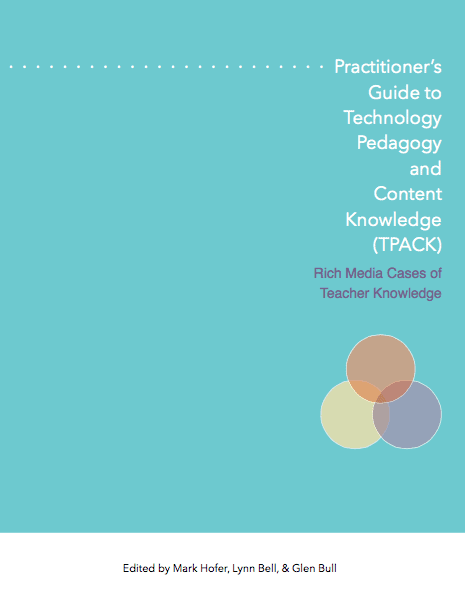3.14 looked in a mirror and guess what he saw? Happy Pi(e) day.
Wordclouds, mathematics and building a better teacher
Wordcloud created from all the words in the wikipedia page for "mathematics education" What does a teacher need to know to intelligently integrate technology in their teaching? Or better still, what is it that teachers need to know to become effective...
Mathematical insight on reality & you (yes, you!)
I have always been intrigued by the manner in which everyday ideas get "mathematicized" (if that's a word). For instance, the other day, on a bus-stop by my office I noticed an equation written on the wall. I have no idea why it was there, but...
Infinite Regress: New ambigram / visual pun
You have wakened not out of sleep, but into a prior dream, and that dream lies within another, and so on, to infinity... The path that you are to take is endless, and you will die before you have truly awakened — Jorge Luis Borges Borges’ quote of reality being a...
Math & Visual Wordplay: New video
The word "math" written such that it has rotational symmetryi.e. it reads the same even when rotated by 180-degrees. The relationship between mathematics and visual wordplay is one I have played with and writing about for a while (More here). I just discovered...
TPACK Newsletters (#28, #29 & 30)
In the rush of summer and the move to Arizona I missed posting #28 and #29 of the TPACK newsletter, and before I knew it, #30 was here as well. Well here are links to the PDFs of all three newsletters Newsletter 28: May 2016 (pdf)Newsletter 29: July 2016...
Ganesh, new ambigram, & old video
One of the big parts of my life over the past decade or more, has been the Ganesh Festival celebrations in Lansing with friends and family—Good food and good times. Of course this year I have to miss all the fun - being here in Phoenix. I have kept up with all...
Why teachers should care about beauty in science
Figure 1. “We are a way for the universe to know itself” - Carl SaganScience is one of the most powerful ways to engage with the beauty of the universe.We use science to understand the cosmos and, in the process,find beauty in our understandings and...
Handbook of TPACK for Educators, 2nd Edition
The TPACK framework, as we know it today, was first introduced to the world in 2006 in an article in TCRecord (Mishra & Koehler, 2006). An important part of the story of the success of the framework was the publication of The handbook of technological pedagogical...
Rich TPACK Cases: Great Resource Book
The TPACK framework is a theoretical framework that seeks to influence practice. And most gratifyingly (for Matt Koehler and myself) it appears to have had a significant impact in that area. That said, the field lacked concrete, rich examples of TPACK in...
Episteme6 @ Mumbai: 2 presentations
This past December I was at the epiSTEME 6 conference in Mumbai. It was jointly organized by the Homi Bhaba Center for Science Education, TIFR and the Interdisciplinary Program in Educational Technology, IIT Bombay. I presented two papers there, oneabout...
Creativity in mathematics and beyond
Our series of articles related to the broad topic of Rethinking technology and creativity for the 21st century in the journal TechTrends continues with a new article on creativity in mathematics. This article focuses on the 4 winners of the 2014...
TPACK Newsletter #25, October 2015
TPACK Newsletter, Issue #25: October 2015 (Updated) Welcome to the twenty-fifth edition of the (approximately bimonthly) TPACK Newsletter! TPACK work is continuing worldwide. This document contains recent updates to that work that we hope will be interesting and...
Ambigrams & Math: In one embeddable ebook
Over the past two years Gaurav Bhatnagar and I have written five columns for the Math education journal At Right Angles on the topics of mathematics and visual wordplay, specifically Ambigrams. In this five articles we have explored everything from symmetry to...
Creativity, Technology & Teacher Education
Danah Henriksen and I recently edited a special issue of the Journal of Technology and Teacher Education (Volume 23, Number 3, July 2015) devoted to Creativity, Technology and Teacher Education. This special issue is organized thematically around eight articles...
Interview in Educational Technology Journal
I was recently interviewed by the journal Educational Technology: The magazine for managers of change in education as a part of their series Q & A with Ed Tech Leaders. The interviews are conducted by contributing editors, Susan M. Fulgham and Michael F....
Mathematical paradoxes & ambigrams: New article
I have always loved paradoxes so it is with great pleasure that the fourth article in our series on Art and Math (co-authored with my friend Gaurav Bhatnagar and published by At Right Angles) focuses on paradoxes and visual wordplay. It was great fun coming up with a...
Poetry, Daisies And Cobras: A Class With Manjul Bhargava
An amazing presentation by Manjul Bhargava (Fields medal winner in Mathematics) to school children in India. See how he effortlessly combines poetry, nature, music and mathematics. Watch an excerpt on YouTube below or the complete video here....
Deep-Play on Michigan Radio Stateside with Cynthia Canty
I am a huge fan of Stateside with Cynthia Canty, a radio show on Michigan Radio. So imagine my excitement when I was interviewed by her about my ongoing exhibition (Deep-Play: Creativity in Math & Art through Visual Wordplay) at the MSU Museum. The interview was...
Why math ed sucks (not just in India)
My friend Hartosh Bal (author of A Certain Ambiguity, a mathematical novel) has a piece in Caravan Magazine titled "Why Fields medalists are unlikely to emerge from the Indian educational system." He mentions the fact that of the three winners of the Field's medal...
Vijay Iyer, polymathy and trans-disciplinary creativity
Vijay Iyer, (http://vijay-iyer.com/) is an Indian-American jazz pianist and composer. He is a MacArthur Genius grant winner and is currently Franklin and Florence Rosenblatt Professor of the Arts at Harvard University and is widely regarded as being one of...
Thanks Wipro & Microsoft
#MSUrbanSTEM Thanks Wipro! #MSUrbanSTEM Thanks Microsoft Over this past summer I have had one of the best teaching/learning experiences of my career. Through a project funded by Wipro (and with support from Microsoft) we have the opportunity to work with 125 teachers...
Self-similarity in math & ambigrams 3/3
Self-similarity in geometry is the idea of repeating a similar shape (often at a different scale) over and over again. In other words, a self-similar image contains copies of itself at smaller and smaller scales, such as the image below of the word "zoom."...
Of math and ambigrams: Exploring Symmetry
Ambigram for Symmetry displaying rotational symmetry I have been writing a series of articles for At Right Angles (a mathematics education magazine) with my friend Gaurav Bhatnagar on the art and mathematics of ambigrams. The first article in the series (Of Art and...
Of clouds, lentils and deep geometries
Back in March of 2012 I was on a plane flying back from the SITE2012 conference in Austin, Texas and noticed an interesting cloud-formation through my airplane window. This intrigued me enough that I took a picture. Here it is (click on the image for a larger...
Seeing mathematics everywhere…
Dame Kathleen Ollernshaw was deaf since the age of 8. Despite this she had an amazing life as a mathematician, amateur astronomer, politician (she served as mayor of Manchester as well as in the Thatcher administration) and mother. To learn more about her read this...
Symmetry: new ambigram
I love the idea of self-reference, words or sentences that refer to themselves in some manner or another. For instance consider the sentence, This is a sentence. This is an example of a relatively benign self-referential sentence. Other examples may not be less...
Trans-disciplinary creativity takes root (slowly)
I wanted to bring attention to two articles that came across my desk today. The first was in the Chronicle of Higher Education titled Creativity: a Cure for the Common Curriculum on efforts at range of universities seeking "to train students in how innovative thinkers...
Algebra, version 2
I had posted yesterday a new ambigram for the word "algebra." It was a mirror-reflection design i.e. it reads the same when reflected in a mirror. What I liked about the design was the fact that it actually looks like an algebraic equation with a left-hand-side and a...
New ambigram, Algebra
I have been thinking about the relationship between ambigrams and mathematics - instigated in no small part by an email conversation with Gaurav Bhatnagar. That inspired me to create ambigrams of words that are related to mathematics. There are a few ideas percolating...












